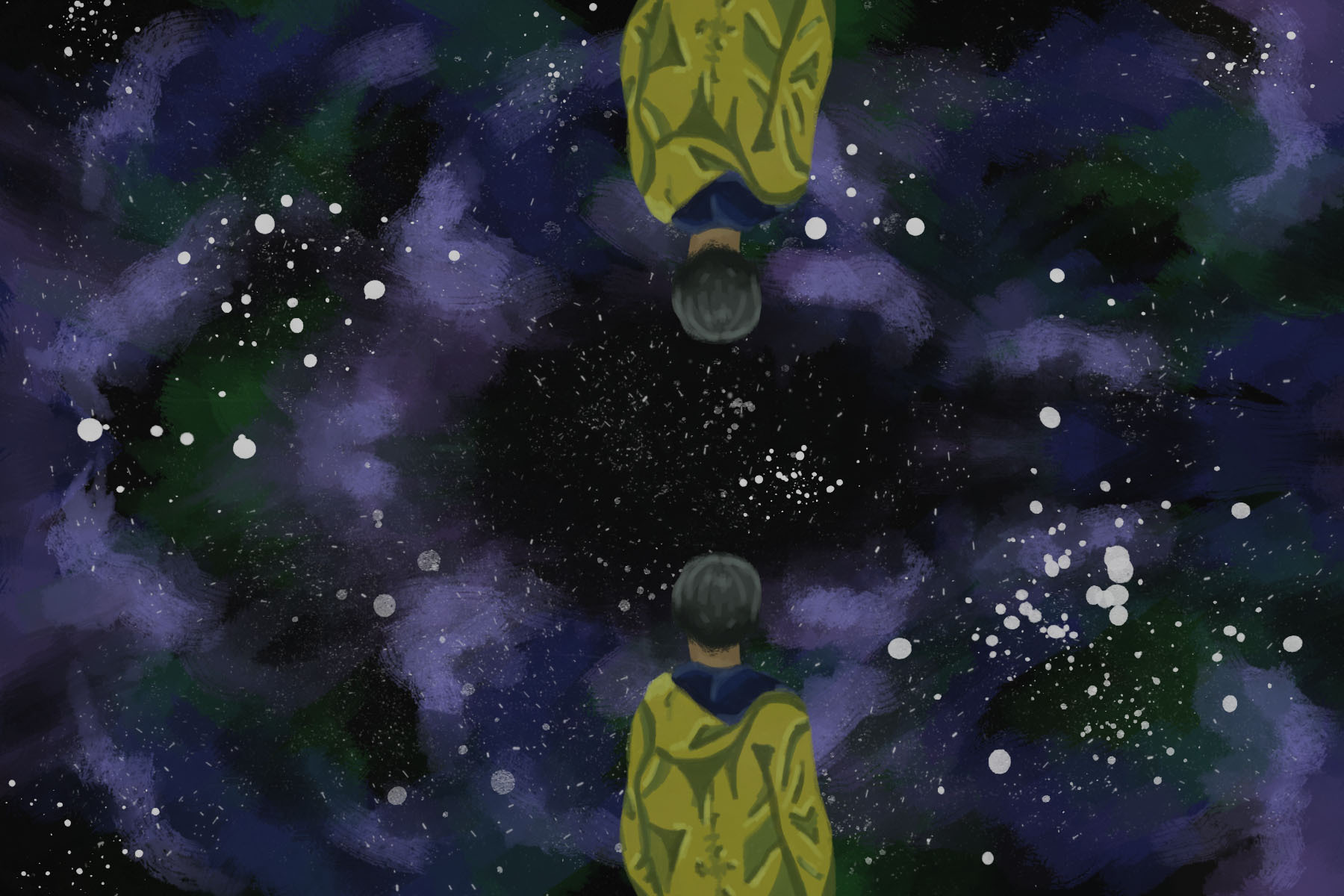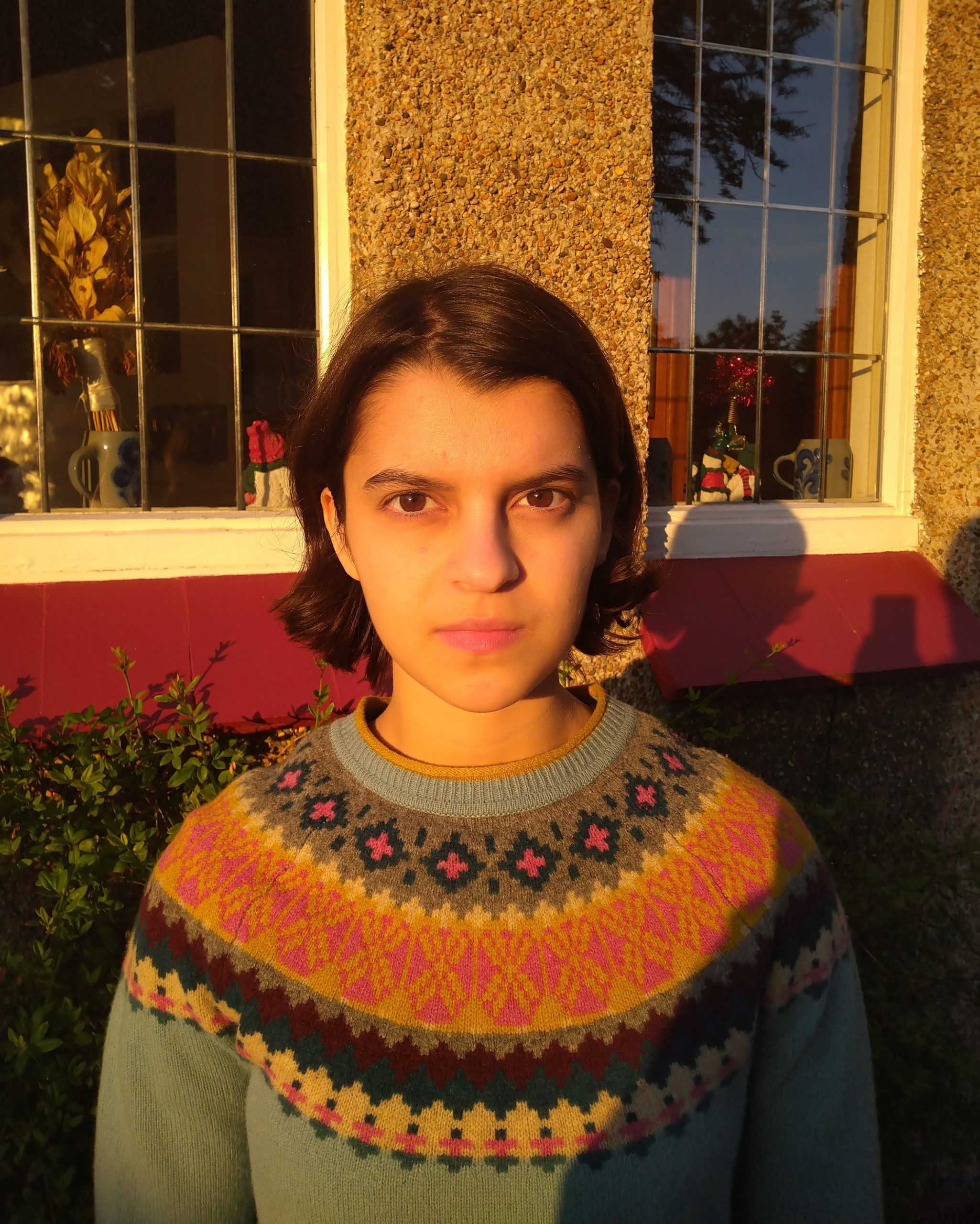This article contains spoilers for all three seasons of “Dark.”
The first season of “Dark,” Netflix’s first German-language original series, reinvents the classic missing person narrative with a sci-fi twist. After Mikkel Nielsen goes missing in the small town of Winden, it is revealed that the strange circumstances of his disappearance are connected to time travel. The question of finding Mikkel is not “where,” but “when?”
Over 10 episodes, the narrative travels between 2019, 1986 and 1953 to reveal a series of mind-boggling twists. There is a wormhole in Winden’s cave system that transports travelers to the past. Protagonist Jonas finds out that mysterious character “The Stranger” who arrives in present-day Winden is his future self, a time traveler. We find out Mikkel got lost in the year 1986.
Most shocking of all, we learn Mikkel is the father of Jonas, which means that Jonas’ desired love interest, Martha, is his aunt. At the end of the first season, it is also revealed that time travel to the future is possible after Jonas is transported through a wormhole to a post-apocalyptic 2052.
With this new element, the second season further complicates the warping story of “Dark.” It picks up in 2053 Winden, a future where the town was decimated by an accident at the power plant in 2020. Desperate to return home and save his loved ones, Jonas travels back in time to stop the apocalypse, passing through 1921, 2019 and finally 2020, just days before the apocalypse. Tragedy and trauma multiply for Jonas, as he realizes that he cannot escape his fate.
As captivating as these two seasons sound, when I first watched them, I wasn’t sure whether to continue with “Dark.” At times, I wanted to stop watching. As the name suggests, “Dark” is not a light show, both in terms of content and viewing ease. The nudity and violence are somewhat gratuitous and make for uncomfortable viewing; why would anyone need to see someone’s head being smashed with a rock, or multiple adulterous and incestuous relationships? The incestuous romantic relationship between Martha and Jonas is especially sickening, more akin to a problematic Greek tragedy than a sci-fi show.
“Dark” is also difficult to watch in another sense. It requires intense concentration on the part of the viewer due to its convoluted plot and its subtitles. Still, I continued watching, already too far down the twisting, time-hopping rabbit hole of “Dark” to stop. The sheer quality of the show was too masterful to abandon, and I sensed there would be a light at the end of the tunnel, a change of events that would inspire me to keep watching. My Netflix prayers were answered at the end of the second season, with the arrival of yet another world-shattering twist: the existence of a parallel universe.
A quick recap: After Martha is killed by Adam, and just as Jonas is mourning the tragic fate of his star-crossed lover, another version of Martha suddenly appears, dressed in black with a shorter haircut. She cuts a sleeker, more futuristic figure, an appearance described by some critics as “chic” or “cyberpunk.” Martha 2 announces she is from a different world: “The question isn’t from what time, but from what world.”
Upon her abrupt arrival, I made wild speculations about what it might mean. Surely, she is from the future, a more technologically advanced world where the apocalypse never happens in Winden?
It turns out I was entirely wrong. The third season picks up with the arrival of Martha 2 and effectively quashes any hopes I had of her world being any different from the first world of Jonas. In fact, her alternate universe is almost identical to the one depicted in earlier seasons of “Dark,” save for a few subtle differences.
This is expertly displayed in the third season’s first episode, appropriately titled “Deja-vu,” where we relive the events that took place at the beginning of the show, not as a remake, but a reflection, as Martha’s world is the mirrored version of Jonas’. Director Baran bo Odar said, “We actually mirrored all the images that take place in a mirrored world, which means you mirror the sets.” This means stairs were built in opposite directions, props were mirrored and actors opened doors with their left hand instead of their right.
The carefully crafted changes didn’t end there. The Nielsen family now lives in the house previously inhabited by the Kahnwalds. Magnus is more goth than emo, with dyed black hair and tattoos replacing a blond fringe. Martha is much more troubled than the one we know, following the divorce of her parents. Ulrich is still an adulterer, but is cheating on the woman he left his wife for. “Deja-vu” is a gray-toned “spot the difference” for any eagle-eyed fans of “Dark” who want to figure out what is different about Martha’s mirrored reality.
As Martha effectively replaces Jonas in her world, since he does not exist in it, her role in the series becomes more significant. Instead of being sidelined as a tragic love interest who only exists to emphasize Jonas’ suffering, Martha is elevated to a complex co-protagonist in her own right. She takes her fate into her own hands, and although manipulated by her future self, she becomes just as central to the epic battle between light and darkness as Jonas is. The other half of the whole dichotomy and the mother of Winden’s intertwined family tree, Martha is also the character who is most difficult to keep track of in the third season; at one point, there are five different versions of her — all in the same room.
The first two seasons of “Dark” gradually built up a slow-burning, dense narrative that confined its mystifying effects to people traveling backward or forward in time. Impossible twists, such as the fact that Charlotte is the daughter of her own daughter, are known as bootstrap paradoxes, explained by the show’s time machine creator H.G. Tannhaus as when “an object or information from the future is sent back to the past that creates a never-ending cycle in which each object no longer has any real origin. It exists without having been created.”
While the paradoxical occurrences of the first and second seasons were difficult enough to comprehend, the third season of “Dark” reaches full incomprehensibility by bending its own time travel logic. Previously, we had only seen people traveling through time to change tragic events or meet versions of loved ones who were still alive.
In the third season, two groups of time travelers, Sic Mundus Creatus Est and Erit Lux, intentionally sent their members backward or forward in time to trigger events. On the orders of elusive leaders Adam and Eva (older versions of Jonas and Martha), the character known as The Unknown travels to various time periods to threaten or murder people to ensure the infinite cycle that links the families of Winden is preserved, and the apocalypse happens as it always has.
The third seasons deals almost exclusively in bootstrap paradoxes that force the viewer to pause the show to stop and think for at least a few minutes (or a few hours after the episode ends), trying to grasp the meaning. This leads to the unpleasant realization that due to time travel, impossible relationships are made possible in Winden, and most relationships in the show are incestuous in some form or another. Winden’s already-looping family tree becomes a complete knot.
Speaking of knots, “Dark” not only continues the crisscrossing time travel in the third season, but also ramps it up a few notches. As well as being able to travel between worlds, characters can now hop between time periods with ease, not constrained by the 33-year time jump that we are familiar with.
Episode 7, “Between the Time,” nearly gave me whiplash with the various worlds and time periods it depicts. Beginning in a third world, as cleverly indicated by using a brighter color palette and changing the aspect ratio, the episode then goes on to show all different time periods that we have never seen before on the series. Switching from the sideburns of the colorful ‘70s to the drab waistcoats and dresses of 1890, the episode briefly stops off in the ‘80s before it ends in an indeterminate future. In this sense, “Dark” is the ultimate period drama, as its time travel plot provides an excellent opportunity for detailed recreations of the past through costume, lighting and production design.
It is undeniable that the unique look of “Dark” is one of its most striking aspects, with its eerily beautiful aesthetic and expansive cinematography, but what struck me most about its final season is how it achieves a definitive ending for the sprawling Netflix saga. After three exhilarating seasons spanning genres, time periods and even worlds, the third season of “Dark” manages to solve its incomprehensible paradoxes, fitting the puzzle pieces together to successfully conclude the final cycle of the time travel triptych.

















